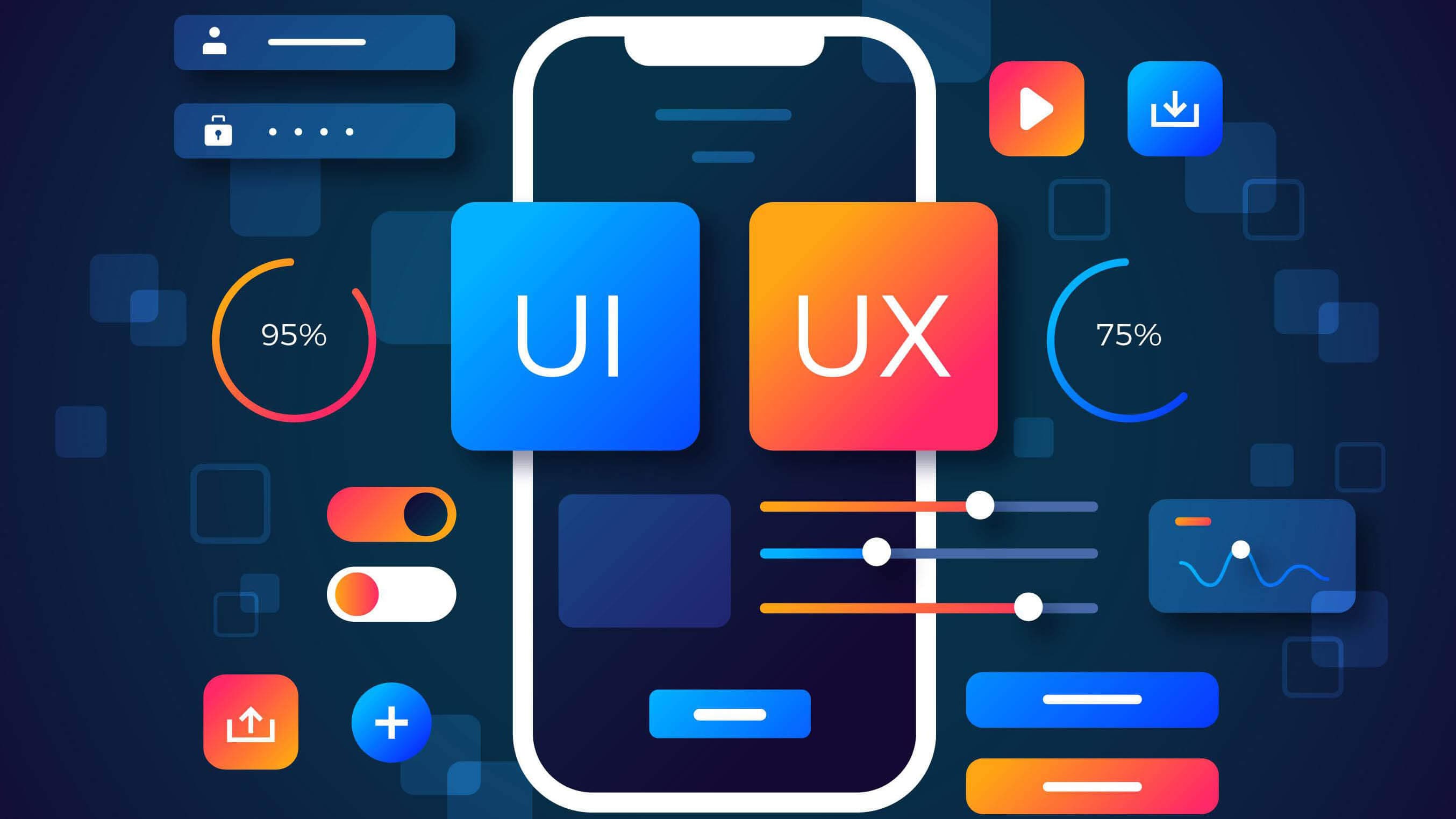The Psychology Behind Great UI/UX Design: What Users Really Want
 Michael Johnson
Michael JohnsonIn today’s digital-first world, user expectations have evolved dramatically. With thousands of apps, websites, and platforms available at the tap of a screen, users no longer settle for functional interfaces they demand experiences that are intuitive, delightful, and emotionally engaging. This is where the psychology behind great UI UX development becomes critical. Understanding how users think, feel, and behave allows designers to craft digital environments that not only perform well but resonate on a psychological level. Whether you’re working with an expert UI UX design development company or building a product in-house, incorporating psychological principles is no longer optional it’s essential.

The Cognitive Foundations of User Experience
Every digital interaction is filtered through the user’s brain. Cognitive psychology, which explores how people perceive, remember, and process information, forms the bedrock of smart UI UX development. Users typically scan rather than read, prefer simple layouts, and avoid interfaces that feel cognitively heavy. The principle of cognitive load suggests that the more mental effort a user must expend, the more likely they are to abandon the task.
Effective user interface design reduces this cognitive strain. Designers use white space to guide focus, visual hierarchy to prioritize content, and familiar patterns to speed up learning. These psychological tactics increase usability and reduce bounce rates, which is why successful UI UX design development companies rely on them extensively in their workflows.
Emotional Design: Building Trust and Delight
Humans are emotional beings. Our reactions to digital interfaces are not purely logical—they’re heavily influenced by emotion. From the color palette to the typography, every design decision can evoke feelings of joy, frustration, trust, or suspicion. Emotional design considers these reactions and strives to elicit positive ones.
Microinteractions, smooth animations, and tailored onboarding experiences tap into the user’s emotional brain. When users feel a sense of delight or accomplishment, they’re more likely to engage longer and return later. Leading UI UX design development companies integrate these techniques not just for aesthetics, but for impact. This principle holds especially true in app development and web development, where user retention is key to product success.
The Power of Visual Perception and Attention
Visual perception plays a major role in UI UX success. Users are drawn to contrast, symmetry, and movement. The Gestalt principles—proximity, similarity, continuity, closure, and figure/ground—describe how people naturally group elements. Great UI design leverages these principles to create layouts that feel harmonious and easy to navigate.
A cluttered interface overwhelms the senses and causes confusion, while a clean, thoughtfully arranged UI promotes confidence and ease. Experienced UI UX development teams apply these rules to anticipate user behavior and create logical flows. In industries like custom software development or chatbot development, where interactions may be more complex, visual clarity can significantly boost user satisfaction and task completion rates.
Personalization and User-Centricity
At the heart of all effective UI UX design is a user-centric philosophy. Personalization, which tailors the experience to the individual, has been proven to increase engagement and loyalty. It satisfies the user’s psychological need for relevance and recognition.
Whether through user profiles, adaptive content, or behavioral data, personalization makes users feel seen and valued. AI plays a significant role here, enabling deeper personalization in real time. Forward-thinking UI UX design development companies often integrate AI development into their design strategy to automate and enhance this experience. From personalized chatbot responses to dynamic interface adjustments, AI-powered personalization is fast becoming a standard in both app development and web development.
Motivation and Gamification
To encourage continued use, great designs tap into user motivation. Techniques like gamification—adding game-like elements such as points, levels, and rewards—appeal to our innate desire for achievement and recognition. These psychological triggers are particularly effective in apps, where user engagement is often tied to product success.
Incorporating gamification within a UI UX development process requires careful consideration of the target audience’s goals and motivations. A UI UX design development company can use behavioral research to align these mechanics with user intent, leading to more meaningful and sustainable engagement. Whether it's encouraging learning in an educational app or nudging users through a multi-step purchase process, gamification drives outcomes.
Trust, Credibility, and Usability
Psychological trust is a deciding factor in whether a user stays or leaves. Visual cues such as secure icons, consistent branding, and transparent communication help foster a sense of credibility. In contrast, a poorly designed UI erodes trust, even if the backend technology is robust.
Establishing trust is even more critical in industries handling sensitive data—such as finance, health, or custom software development platforms. Clean design, intuitive navigation, and professional aesthetics are essential. This is why clients seeking digital transformation increasingly turn to experienced UI UX design development companies who understand the psychology of trust.
Accessibility and Inclusivity
Great UI UX design is inclusive. It respects the diversity of users in terms of age, ability, culture, and device preference. Psychology tells us that humans interpret and interact with content differently based on individual capabilities. Designing with empathy means accounting for visual impairments, cognitive limitations, and even emotional states.
Tools like color contrast checkers, voice control options, and screen reader compatibility ensure your product is usable by all. Inclusive design isn’t just ethically sound—it also expands your market reach. Whether you're building a product through app development, web development, or chatbot development, accessible interfaces result in better user experiences for everyone.
Feedback Loops and Behavioral Learning
One of the most powerful psychological principles in design is the feedback loop. When users receive instant confirmation that their action was successful, they feel in control and gain confidence in the system. Think of a button that animates when clicked or a success message after submitting a form—these are feedback mechanisms that guide users and reinforce behaviors.
Conversely, unclear or missing feedback leads to user anxiety and abandonment. Through proper UI UX development, these micro-moments become seamless parts of the interaction. As users learn the system’s responses, they develop behavioral expectations. This loop creates a smoother, faster experience that feels second nature.
The Role of Color, Typography, and Motion
Design elements like color, typography, and motion are not just stylistic choices—they have deep psychological implications. Colors influence mood and perception. For instance, blue suggests trust and calm, while red signals urgency or danger. Fonts convey tone: serif fonts feel traditional and reliable, while sans-serif fonts are clean and modern.
Motion design, when used strategically, guides attention, provides context, and adds energy. However, overuse can be distracting. UI UX design development companies expertly balance these elements to enhance rather than overwhelm. In custom software development, where user training may be minimal, these psychological signals help guide users instinctively.
Final Thoughts: Psychology as a Design Superpower
Incorporating psychology into UI UX development is not about manipulation—it’s about empathy. It’s about understanding what users want, why they behave the way they do, and how to design experiences that align with those behaviors. In a landscape where digital products abound, the ones that connect on a human level are the ones that win.
From reducing cognitive friction to building emotional connections, from applying Gestalt principles to leveraging AI for personalization, psychology is at the core of truly great design. Partnering with a UI UX design development company that understands this ensures that your app or platform doesn’t just function it flourishes.
Subscribe to my newsletter
Read articles from Michael Johnson directly inside your inbox. Subscribe to the newsletter, and don't miss out.
Written by
